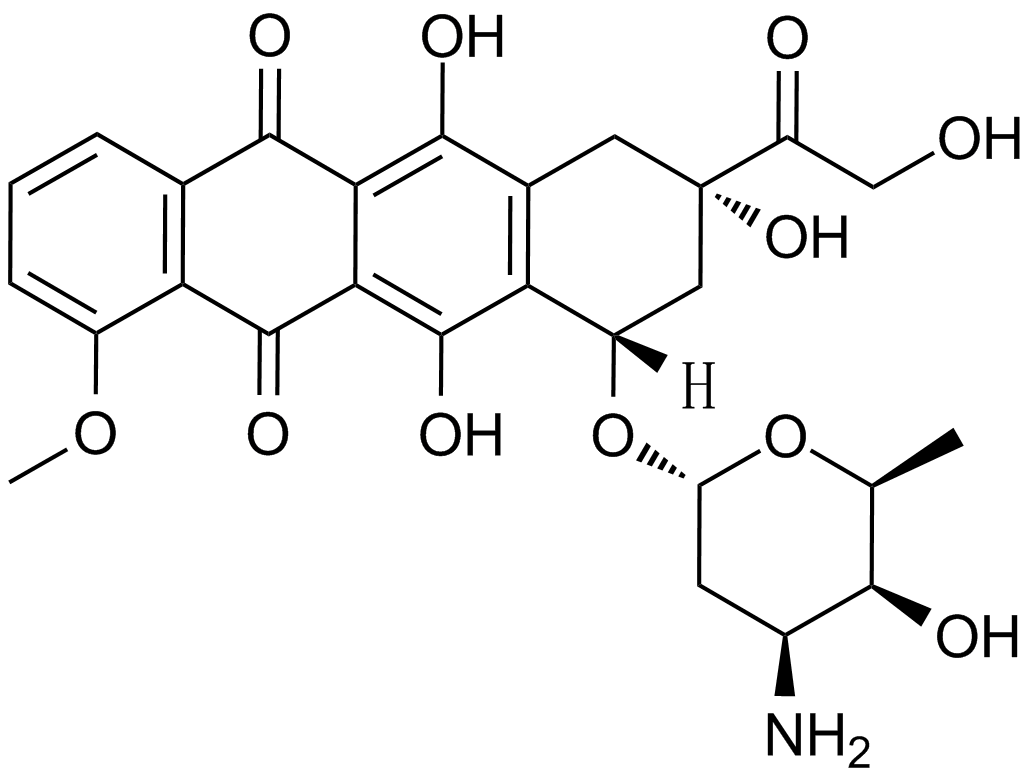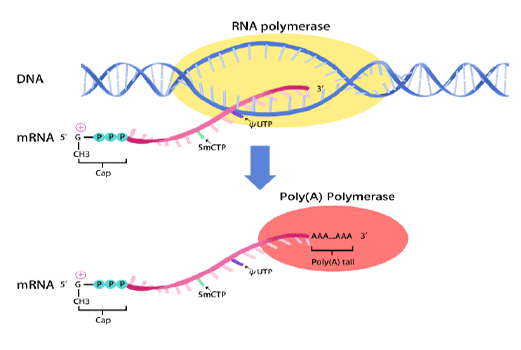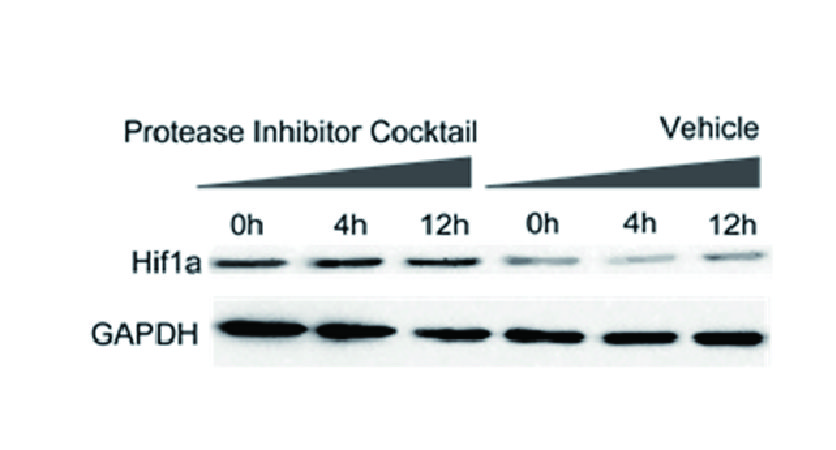Doxorubicin [23214-92-8]
Brand : APExBIO Technology
Request more information
Please log in to use this feature.
Doxorubicin
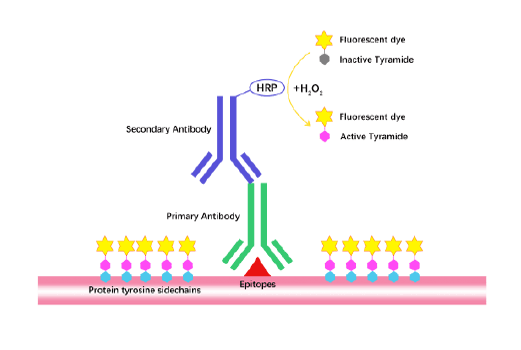
Tyramide Signal Amplification (TSA)
TSA (Tyramide Signal Amplification), used for signal amplification of ISH, IHC and IC etc.
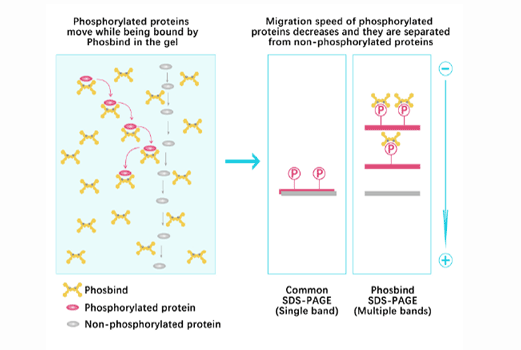
Phos Binding Reagent Acrylamide
Separation of phosphorylated and non-phosphorylated proteins without phospho-specific antibody
Background
Doxorubicin is a semi-synthesized anticancer agent derived from bacterial culture. [1] It is an anthracycline antibiotic. It is been widely used in blood cancers, solid tumors and sarcomas.
Doxorubicin intercalates into DNA double strand and inhibits the progression of DNA topoisomerase II, stopping replication process. [2] Doxorubicin also induces histone eviction from open chromatin, causing DNA damage and epigenetic deregulation. [3]
Doxorubicin is administrated intravenously. Approximately 75% of doxorubicin and its metabolites bind to plasma protein. Doxorubicin does not cross blood brain barrier. 50% of the drug is eliminated unchanged from the body mainly though bile excretion. The remaining undergoes one-electron reduction, two-electron reduction, and deglycosidation. The major metabolite is a potent membrane ion pump inhibitor, which is associated with cardiomyopathy. [4]
References:
[1]Brayfield, A, ed. (2013). Doxorubicin. Martindale: The Complete Drug Reference. Pharmaceutical Press. Retrieved 15 April 2014.
[2]Pommier Y., et al. (2010). DNA topoisomerases and their poisoning by anticancer and antibacterial drugs. Chemistry & Biology 17 (5): 421–433.
[3]Pang, B., et al. (2013). Drug-induced histone eviction from open chromatin contributes to the chemotherapeutic effects of doxorubicin. Nature Communications 4 (5): 1908
[4]Boucek RJ., et al. (1987). The major metabolite of doxorubicin is a potent inhibitor of membrane-associated ion pumps. A correlative study of cardiac muscle with isolated membrane fractions. J of Biol Chem 262: 15851-15856.
Product Citation
- 1. Shudan Wang, Mingcai Chen, et al. "Shexiang Baoxin Pills alleviate doxorubicin-induced cardiotoxicity via the reactive oxygen species-mediated AKT/Bcl-2 pathway." Published in Medicine 27 December 2024
- 2. Min Wang, Fang Zhou, et al. "The transcription factor PPARA mediates SIRT1 regulation of NCOR1 to protect damaged heart cells." Cardiovascular Diagnosis & Therapy Vol 14, No 5 (October 31, 2024).
- 3. Siyuan Li, Wencheng Zhang, et al. "Serum sSelectin-L is an early specific indicator of radiation injury." Heliyon. 2024 May 8;10(10):e30527. PMID: 38778981
- 4. Ivonne González-Gamboa, Adam A Caparco, et al. "Inter-coat protein loading of active ingredients into Tobacco mild green mosaic virus through partial dissociation and reassembly of the virion." Sci Rep. 2024 Mar 26;14(1):7168. PMID: 38532056
- 5. Baiying Lei, et al. "Morphology-based deep learning enables accurate detection of senescence in mesenchymal stem cell cultures." BMC Biol. 2024 Jan 2;22(1):1. PMID: 38167069
- 6. Meng Wang, Dongfang Xie, et al. "Multiple ingredients of a Chinese medicine formula Sheng-Mai-San coordinately attenuate doxorubicin-induced cardiotoxicity." Pharmacological Research - Modern Chinese Medicine. Volume 8, September 2023, 100281.
- 7. Riley Plett, Paul Mellor, et al. "Homoharringtonine demonstrates a cytotoxic effect against triple-negative breast cancer cell lines and acts synergistically with paclitaxel." Sci Rep. 2022 Sep 19;12(1):15663. PMID: 36123435
- 8. Boqin Hu, Dong Zhen, et al. "Ethanol extracts of Rhaponticum uniflorum (L.) DC flowers attenuate doxorubicin-induced cardiotoxicity via alleviating apoptosis and regulating mitochondrial dynamics in H9c2 cells." J Ethnopharmacol. 2022 Apr 24;288:114936. PMID: 35007682
- 9. Hai-Bing Yang, Zhao-Yang Lu, et al. "Selenium Attenuates Doxorubicin-Induced Cardiotoxicity Through Nrf2-NLRP3 Pathway." Biol Trace Elem Res. 2021 Aug 30. PMID: 34462843
- 10. Ji Yun Lee, Joo Hyun Kim, et al. "EGR1 as a potential marker of prognosis in extranodal NK/T-cell lymphoma." Sci Rep. 2021 May 14;11(1):10342. PMID: 33990633
- 11. Zhongying Gong, Xiaoying Liu, et al. "Tumor acidic microenvironment-induced drug release of RGD peptide nanoparticles for cellular uptake and cancer therapy." Colloids Surf B Biointerfaces. 2021 Mar 4;202:111673. PMID: 33714186
- 12. Ji Yun Lee, Joo Hyun Kim, et al. "Gene Expression Profiling in Extranodal NK/T-Cell Lymphoma." Research Square. December 4th, 2020.
- 13. Wang X, Wang Q, et al. "TFEB-NF-κB inflammatory signaling axis: a novel therapeutic pathway of Dihydrotanshinone I in doxorubicin-induced cardiotoxicity." J Exp Clin Cancer Res. 2020;39(1):93. PMID: 32448281
- 14. Gong Z, Lao J, et al. "pH-Triggered geometrical shape switching of a cationic peptide nanoparticle for cellular uptake and drug delivery." Colloids Surf B Biointerfaces. 2020;188:110811. PMID: 31982793
- 15. Qi W, Boliang W, et al. "Cardamonin protects against doxorubicin-induced cardiotoxicity in mice by restraining oxidative stress and inflammation associated with Nrf2 signaling." Biomed Pharmacother. 2020;122:109547. PMID: 31918264
- 16. Gong Z, Shi Y, et al. "Plasma Amine Oxidase-Induced Nanoparticle-to-Nanofiber Geometric Transformation of an Amphiphilic Peptide for Drug Encapsulation and Enhanced Bactericidal Activity." ACS Appl Mater Interfaces. 2020;12(4):4323–4332. PMID: 31899611
- 17. Gong Z, Liu X, Wu J, et al. "pH-triggered morphological change in a self-assembling amphiphilic peptide used as an antitumor drug carrier." Nanotechnology. 2020;31(16):165601. PMID: 31891937
- 18. Yan L, Ding B, et al. "Inhibition of SMYD2 suppresses tumor progression by down-regulating microRNA-125b and attenuates multi-drug resistance in renal cell carcinoma." Theranostics. 2019 Oct 22;9(26):8377-8391. PMID: 31754403
- 19. Wang Z, Chen J, et al. "cGAS/STING axis mediates a topoisomerase II inhibitor-induced tumor immunogenicity." J Clin Invest. 2019 Aug 13;130:4850-4862. PMID: 31408442
- 20. Wang X, Li C, et al. "Tanshinone IIA Restores Dynamic Balance of Autophagosome/Autolysosome in Doxorubicin-Induced Cardiotoxicity via Targeting Beclin1/LAMP1." Cancers (Basel). 2019 Jun 28;11(7). pii: E910. PMID: 31261758
- 21. Zhang Y, Xia F, et al. "miR-135b-5p enhances doxorubicin-sensitivity of breast cancer cells through targeting anterior gradient 2." J Exp Clin Cancer Res. 2019 Jan 21;38(1):26. PMID: 30665445
- 22. Goodspeed A, Jean A, et al. "A Whole-genome CRISPR Screen Identifies a Role of MSH2 in Cisplatin-mediated Cell Death in Muscle-invasive Bladder Cancer." Eur Urol. 2019 Feb;75(2):242-250. PMID: 30414698
- 23. Deng Y, Li F, et al. "Triptolide sensitizes breast cancer cells to Doxorubicin through the DNA damage response inhibition." Mol Carcinog. 2018 Jun;57(6):807-814. PMID: 29500880
Chemical Properties
| Physical Appearance | A solid |
| Storage | Store at 4°C |
| M.Wt | 543.52 |
| Cas No. | 23214-92-8 |
| Formula | C27H29NO11 |
| Synonyms | Adriamycin, Doxil, Adriablastin, Doxorubicinum, Myocet |
| Solubility | ≥27.2 mg/mL in DMSO; insoluble in EtOH; ≥24.8 mg/mL in H2O with ultrasonic |
| Chemical Name | (7S,9S)-7-[(2R,4S,5S,6S)-4-amino-5-hydroxy-6-methyloxan-2-yl]oxy-6,9,11-trihydroxy-9-(2-hydroxyacetyl)-4-methoxy-8,10-dihydro-7H-tetracene-5,12-dione |
| SDF | Download SDF |
| Canonical SMILES | CC1C(C(CC(O1)OC2CC(CC3=C(C4=C(C(=C23)O)C(=O)C5=C(C4=O)C=CC=C5OC)O)(C(=O)CO)O)N)O |
| Shipping Condition | Small Molecules with Blue Ice, Modified Nucleotides with Dry Ice. |
| General tips | We do not recommend long-term storage for the solution, please use it up soon. |
Protocol
| Cell experiment [1]: | |
| Cell lines | MDA-MB-231 cells |
| Preparation method | This compound is soluble in DMSO. General tips for obtaining a higher concentration: Please warm the tube at 37 ℃ for 10 minutes and/or shake it in the ultrasonic bath for a while. Stock solution can be stored below -20 ℃ for several months. |
| Reaction Conditions | 20 nM; 72 hrs |
| Applications | In MDA-MB-231 cells, SH003 at 120 μg/mL with Doxorubicin at 20 nM showed a synergistic effect. |
| Animal experiment [2]: | |
| Animal models | Female athymic nude mice injected s.c. with MB231 cells |
| Dosage form | 3 mg/kg/day; delivered intratumorly |
| Applications | Doxorubicin in combination with adenoviral MnSOD (AdMnSOD) plus 1,3-bis(2-chloroethyl)-1-nitrosourea (BCNU) showed the greatest effect in decreasing the volumes of MB231 tumors and prolonging survival of mice. |
| Other notes | Please test the solubility of all compounds indoor, and the actual solubility may slightly differ with the theoretical value. This is caused by an experimental system error and it is normal. |
| References: [1]. Woo SM, Kim AJ, Choi YK, Shin YC, Cho SG, Ko SG. Synergistic Effect of SH003 and Doxorubicin in Triple-negative Breast Cancer. Phytother Res. 2016 Aug 1. [2]. Sun W, Kalen AL, Smith BJ, Cullen JJ, Oberley LW. Enhancing the antitumor activity of adriamycin and ionizing radiation. Cancer Res. 2009 May 15;69(10):4294-300. | |
Biological Activity
| Description | Doxorubicin (Adriamycin) is an antibiotic agent, inhibitor of DNA topoisomerase II and inducer of DNA damage and apoptosis. | |||||
| Targets | Autophagy | |||||
| IC50 | ||||||
Quality Control
Related Biological Data

Related Biological Data

Related Biological Data

Related Biological Data

Related Biological Data

Related Biological Data





